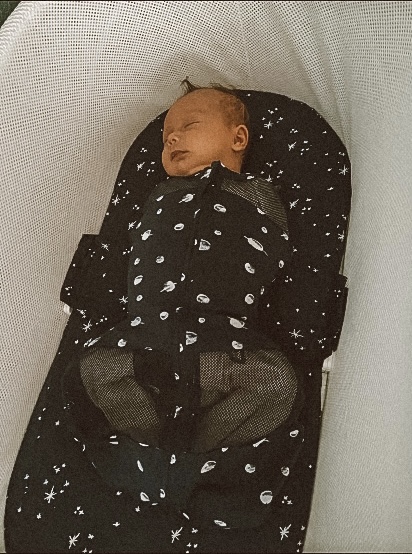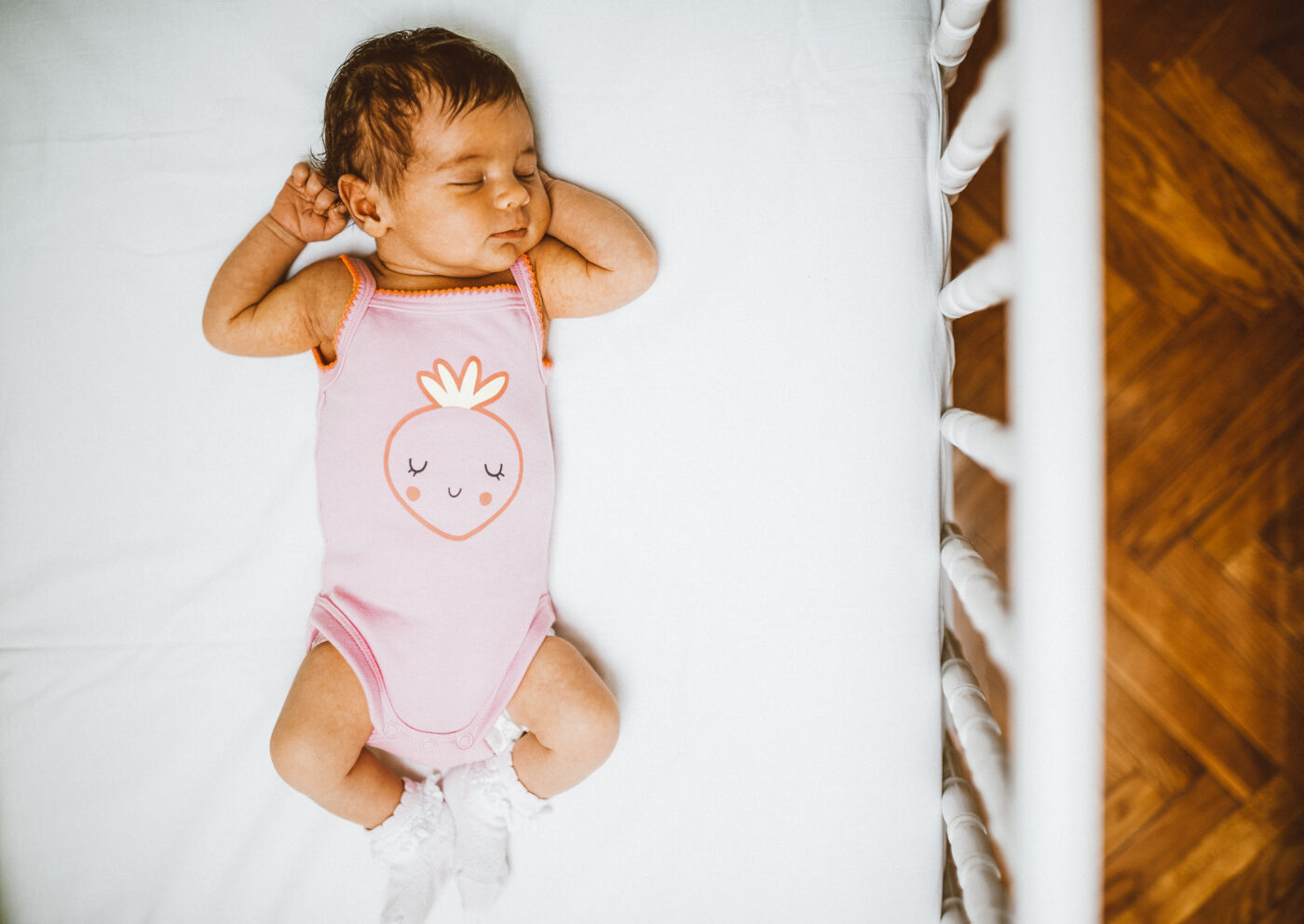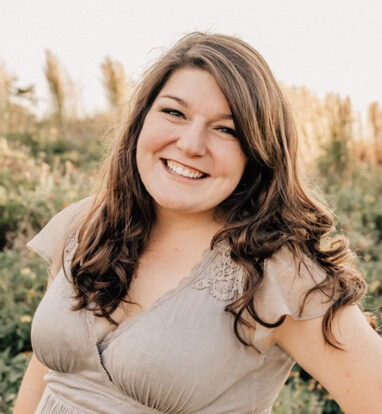Going Out to Dinner with Kids While on a Sleep Schedule
Is the Snoo Worth the Money? A Sleep Expert’s Review
The Snoo has become quite a popular product on the baby market today. “Is the Snoo worth the money?” is a common question we receive from expectant parents as they prepare for the challenges of newborn sleep. To answer this question honestly, we cannot give a simple yes or no answer.
The truth is; some families love owning a smart bassinet, while others express regret about the purchase. It is important to note that several trusted parenting experts have fully endorsed the Snoo. We want to be clear that we are not writing to refute their recommendations at all. Understand that everything with a downside has an upside too (and vice versa)!
Our team believes there are several factors to consider when determining if the Snoo is best for your new addition. Allow us to share our professional point of view on this hot topic. Our goal is to aide you in making an informed decision that works best for your family.

Snoo Safety
The Snoo boasts itself as “the world’s smartest and safest baby bed.” With mesh walls for healthy air flow and a flat surface, it is considered safe. The flat sleep surface, like any other bassinet, pack-n-play, or crib mattress, is ideal. Further, the Snoo requires babies be laid down on their backs, which is absolutely the safest option for little ones.
However, many families feel comfortable using the Snoo’s built-in swaddle feature far beyond the AAP’s recommended age. In an effort to keep the little one in a specific position, parents strap babies in the attached swaddle. The AAP recommends removing all swaddles at 8 weeks old, even those that are built-in. The AAP also deems positioners as unsafe. We are very careful about our recommendations for little ones sleeping in this device beyond 8 weeks.
Although we are thrilled that there are no reported Snoo injuries, we know that plagiocephaly is more likely to occur when children spend a large portion of the day in the same position. To avoid this issue, we often recommend that families lay their little ones down facing alternating directions. That simply means to switch which end of the crib, bassinet, or pack-n-play your baby’s head is on at each lay down. This shift allows babies who enjoy staring at a specific spot in the room as they fall asleep (or when they wake up) to avoid always turning the same direction. Thus, we can strive to prevent flat spots on a baby’s preferred side.
Since the Snoo provides a longer side for growing legs, babies are strapped in in one particular direction each time. As a result, we notice little ones (particularly those already prone to head-shape issues) increase their likelihood of encountering such problems with prolonged use of the Snoo.
Cost of the Snoo
It is no secret that the Snoo is an expensive product. Due to the more advanced features, it is one of the priciest bassinets a parent can purchase. With a price tag of nearly $1,600, it is one of the most highly-priced items a parent may consider when awaiting a new addition.
Instead of buying one, the Snoo also offers rental options. However, rent runs about $159-$300 per month, and there is also a $99 (or more) cleaning and reconditioning fee. Thus, at a minimum, it will still be a several hundred dollar investment for even just one month of use.
For LESS than the price of a Snoo, families may benefit even more from an alternative investment. In our very biased opinion, purchasing the education and support of a certified sleep consultant is a long-lasting investment. Your time with a Sleep Wise consultant allows your baby to embrace prop-free sleep long-term. Best of all, this journey is more affordable and isn’t something children “outgrow.” For an entire year – yes, you read that correctly – from birth to the first birthday, parents can purchase one on one personalized support without spending as much as they would to own a Snoo. This leads perfectly into our next point…
Product Longevity
At maximum, the Snoo recommends six months of use. It’s most helpful in the very few months of a baby’s life when little ones are often room-sharing with parents. Any bassinet or pack-n-play can fulfill the same purpose. As babies gain weight and increase mobility, outgrowing the Snoo (or any bassinet) is inevitable. Once infants can get on their hands and knees, the Snoo is no longer safe to use. It is a product designed for short-term use.
The Snoo as both a sleep space and a means of continuous soothing is temporary. As mentioned above, teaching your little one healthy sleep habits is not temporary. If you wish to teach the skills, the gift of independent sleep will last a lifetime! However, it certainly doesn’t have to be one or the other.
Weaning A Baby From The Snoo
Perhaps the thing most parents want to know is how difficult it will be to wean from the continuous motion, sound, and robotic features of the Snoo. There isn’t one set answer, as this is greatly dependent upon each individual baby. Undoubtedly, continuous movement is a significant sleep prop that a child will have to learn to sleep without when parents choose to make that change. It takes time and repetition to master connecting sleep cycles independently.
Since the Snoo can sense a baby’s cries from room noise, the subsequent increase of the soothing motion often is intentional. The goal is to act in place of a caregiver’s response. While this may temporarily buy some time for increasing parental stretches of sleep, it is not a sustainable model as a baby gets older.
Undoubtedly, we have worked with children who transition out of the Snoo similarly to those dropping any sleep prop. Sometimes, it is simpler than parents expect! Other times, of course, it can be harder. We have all seen babies who struggle greatly when adjusting to sleeping in a more permanent, stationary safe sleep environment. Weaning from any external aide that helps little ones fall asleep or stay asleep can be difficult, but it is always possible. The Snoo is not an exception to that rule! Dropping the Snoo when you want (or have) to is doable, but children are going to respond differently based on their temperaments, individual personalities, and their current reliance on the ongoing assistance of connecting sleep cycles.
The Result

Ultimately, we are privileged to work with many, many families as they transition out of the Snoo. We genuinely love to help families through such a change! Some babies are sleeping very well in the Snoo prior to coming to us, so parents simply want help to get similar great sleep in a crib. Still many others have significant sleep struggles even in the Snoo, so they reach out for assistance in fixing those issues altogether. Regardless, the end result is a baby who sleeps well in a permanent sleep space. Embracing the world of independent sleep ensures that restorative sleep is attainable for all sleepers!
Whether or not you choose to use a Snoo initially, restorative sleep can be a part of your household’s future long-term!

Kelsey Hotchkiss is a Certified Pediatric Sleep Consultant and Senior Consultant that has transformed sleep for hundreds of families. As both an educator and mother of two little ones (with another bundle of joy on the way this summer!), Kelsey is passionate about educating families to help them make the best decisions for their little ones. She strives to help parents enjoy every stage of the parenting journey with confidence, safety, and support!
Reviewed by Safe Sleep Expert, Susan Lowman.


